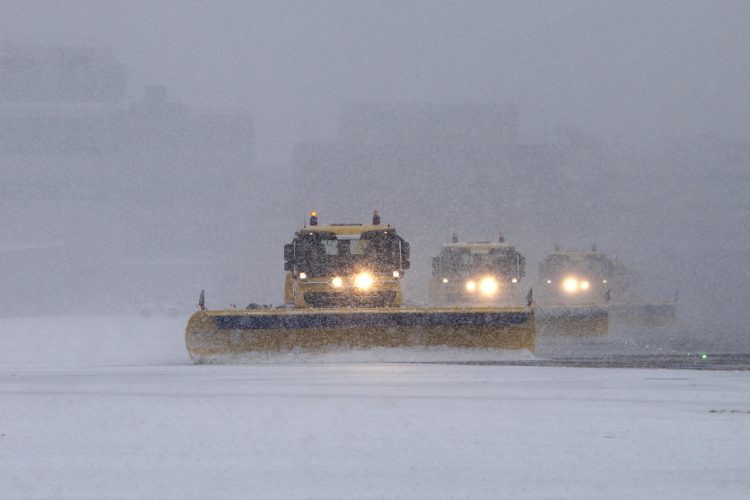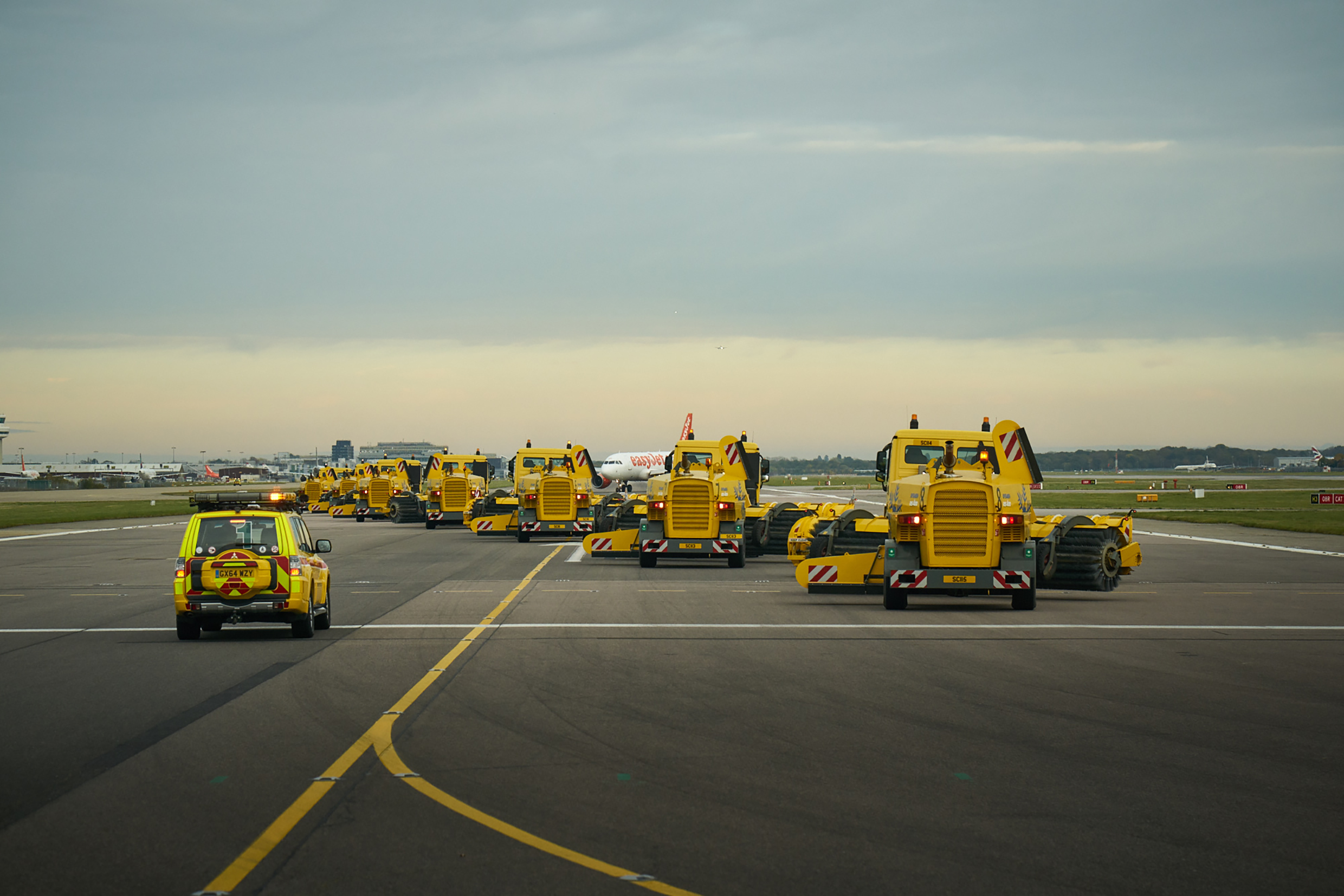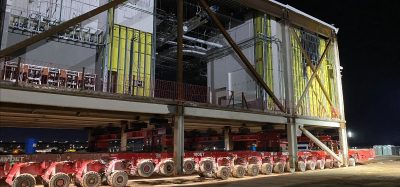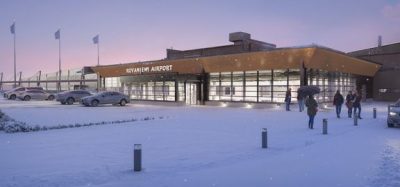London Gatwick: Ploughing ahead with winter preparations
- Like
- Digg
- Del
- Tumblr
- VKontakte
- Buffer
- Love This
- Odnoklassniki
- Meneame
- Blogger
- Amazon
- Yahoo Mail
- Gmail
- AOL
- Newsvine
- HackerNews
- Evernote
- MySpace
- Mail.ru
- Viadeo
- Line
- Comments
- Yummly
- SMS
- Viber
- Telegram
- Subscribe
- Skype
- Facebook Messenger
- Kakao
- LiveJournal
- Yammer
- Edgar
- Fintel
- Mix
- Instapaper
- Copy Link
Posted: 29 December 2024 | | No comments yet
‘Polar Bears’ and ‘Yeti’ are front and centre at London Gatwick as the UK’s second-busiest airport gears up for an efficient and resilient winter season. Chief Operating Officer, Mark Johnston, shares what it takes to prepare for adverse weather.


Credit: David Parry/PA
With the warm, late summer sun casting a glorious glow across London Gatwick’s airfield, it feels somewhat perverse to be looking at schedules for our annual ‘Polar Bear’ training.
But such is the hectic, fast-paced nature of an international airport, we are always having to plan months in advance to prepare for winter weather.
The Aerodrome Training Team start their winter resilience training in October and the ‘Polar Bear’ sessions will be in full swing. Around 180 London Gatwick colleagues from a range of airport roles are trained to use some of our fleet of snow vehicles, from tractors to ‘multi-hogs’ – multi-purpose vehicles which can carry out an array of tasks year-round, including snow clearance.
The training involves three days of driving winter vehicles and getting used to the airside environment, driving safely and learning the airfield layout. They will be taught how to operate the vehicles and how to clear snow and ice from our airfield, in accordance with the airport’s adverse weather plan.
Significant weather events
Although we haven’t seen any prolonged severe weather since the ‘Beast from the East’ in 2018, our ‘Polar Bears’ still need to be ready to act. The team’s training, agility and determination paid dividends in December 2022, as they were able to move an astonishing 94,000 tonnes of snow in less than two hours, to clear the runway and taxiways. This not only involved a fleet of snow ploughs sweeping the runway, but our snow cutter was called into action too. This was because a bank of snow was created on either side of the runway by the ploughs that was too high to resume airfield operations.
Our ‘Polar Bears’ and ‘Yetis’ are just one of several mitigations we have in place to deal with potential adverse conditions”
A two-hour runway closure, under the circumstances, was an incredible outcome. Without the team’s efficient actions, the airfield could easily have been closed for longer and passengers may have had a far different experience that day.
With these types of events being fairly rare at London Gatwick, it highlights the importance of the thorough training and preparation our teams undertake every year.
Winter warriors ready for action
While the ‘Polar Bears’ are our airfield winter warriors, we also have a flurry of ‘Yeti’ ready and willing to tackle the landside areas. The 25 volunteers from our Passenger Operations team are on-hand to utilise our 70 tonnes of on-site grit, across 27 miles of road network alongside bus routes and car parks. All to insure that passengers and colleagues keep moving safely and minimise disruption.
Our ‘Polar Bears’ and ‘Yetis’ are just one of several mitigations we have in place to deal with potential adverse conditions. We strive to keep the airfield operation running as smoothly as possible, and provide reassurance to our airlines and passengers that we are doing all we can to minimise any weather-based disruption.


Airside Ops live practice snow clearing exercise. Credit: LGW
The Transport Engineering team are also geared up for inclement conditions, having already serviced a winter core fleet of 80 vehicles from tractors, and a large runway plough and brush, to de-icers, gritters and snow cutters, readying them for the winter months.
The maintenance window for the machinery is between April and October, and alongside the routine maintenance and preparation, this includes de-icer calibration to ensure the correct delivery rates of media to the runway and taxiway surfaces. This is particularly vital as the de-icers are our first line of defence – the first machines to go out and the last to return.
The Transport Engineering team are in a state of readiness and on call during the entire winter season to support the kit in operation and when used in winter conditions.
Lessons learned
Having previously worked at Glasgow Airport and AGS Airports – which incorporates both Glasgow and Aberdeen – I’ve had the benefit of a number of years of winter preparations and have been able to take several learnings – both the good and not so good.


Airfield Ops Snow Cutter vehicle. Credit LGW.
Firstly – always be cautious with a forecast. They have got better over the years but when the ‘Beast from the East’ hit Glasgow, we were forecast 4cm of snow and got 40cm! Secondly, the right equipment and its availability are critical and as we head into my first winter at London Gatwick, I’ve certainly been impressed by how well resourced we are in this area. Finally, if there is a heavy downfall planned, think about the ability of your team to make it to site. All the training in the world unfortunately means nothing if the people with the expertise can’t get to the airport safely.
All our advance planning and preparation at London Gatwick hopefully means we can smoothly and efficiently help millions of passengers move through the airport over the winter months, to our 220-plus destinations.
Mark Johnston bio


Mark Johnston COO. Credit: LGW
Mark joined London Gatwick in March 2024 as Chief Operating Officer (COO). He joined from AGS Airports, the owners of Aberdeen, Glasgow and Southampton airports, where he served for more than three years as the COO. Prior to joining London Gatwick, Mark gained two decades worth of highly relevant technical and professional experience; having led security, technical, infrastructure and airport terminal departments. Mark holds a BEng in Electrical and Electronic Engineering and also an MBA from the University of Glasgow.
Related topics
Airport crisis management, Airside operations, Engineering, Maintenance, Passenger experience and seamless travel, Safety, Winter operations
Related airports
Glasgow Airport (GLA), London Gatwick Airport, Southampton Airport


















